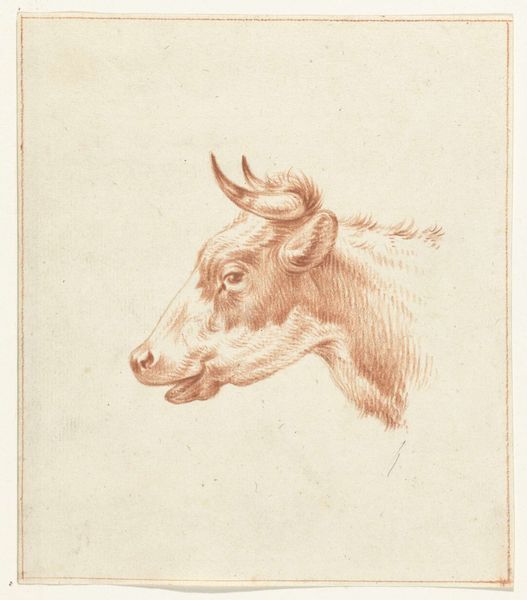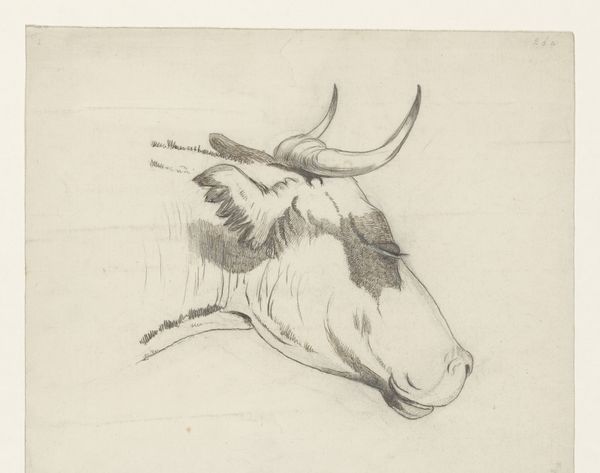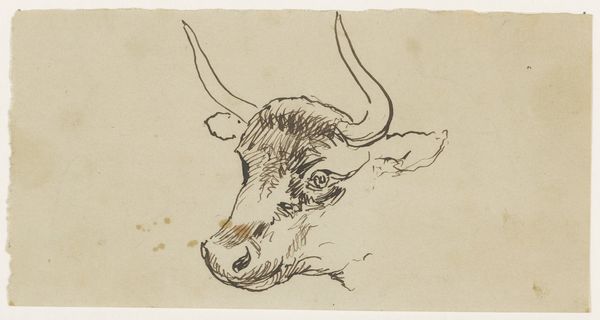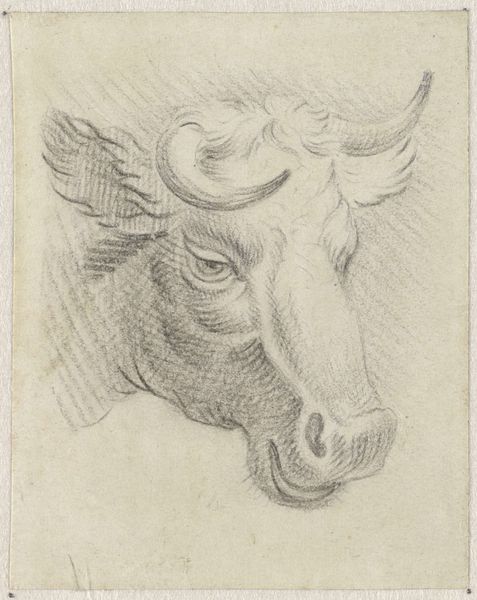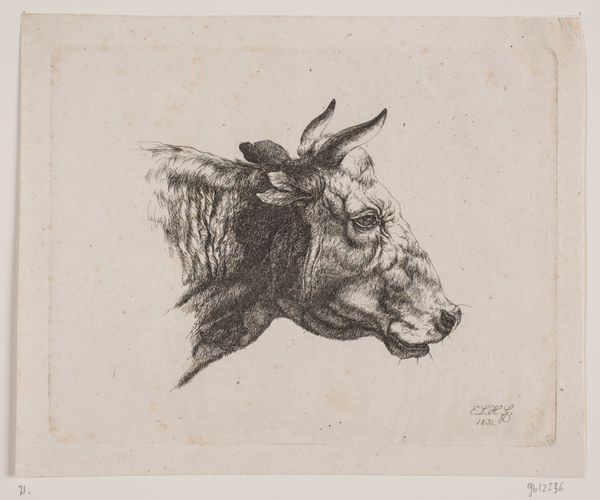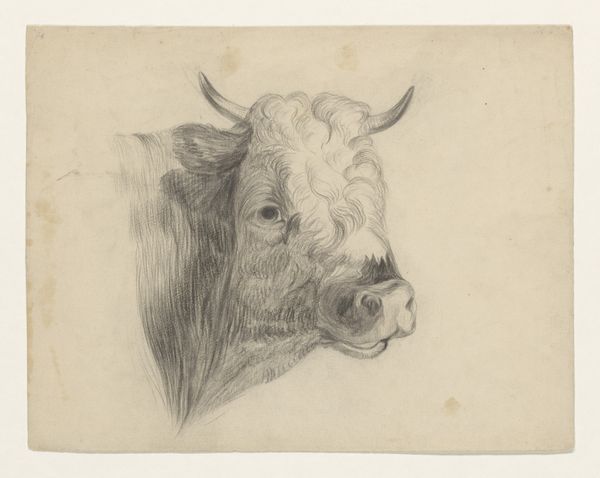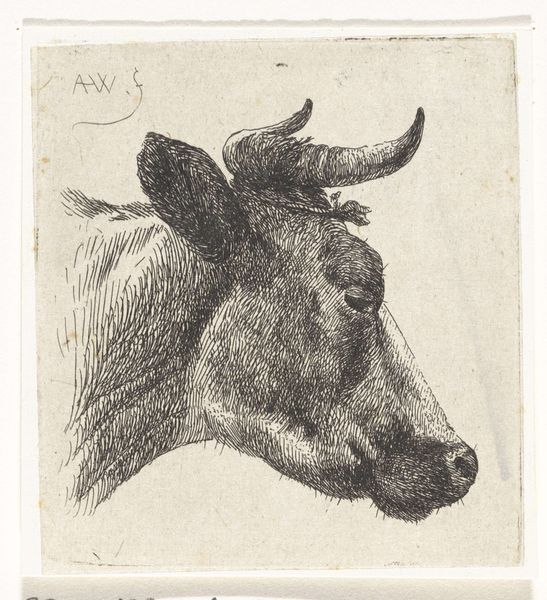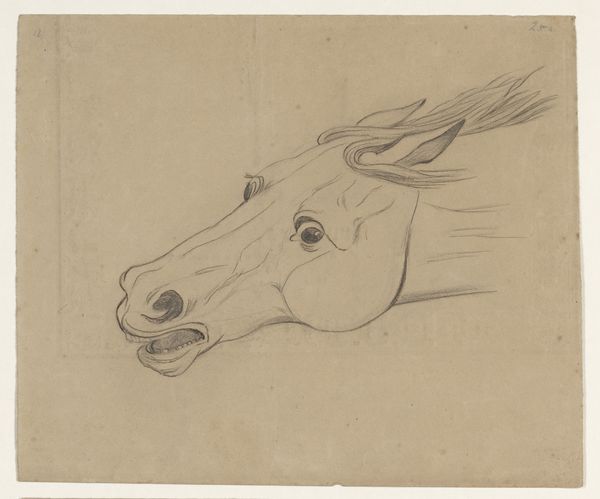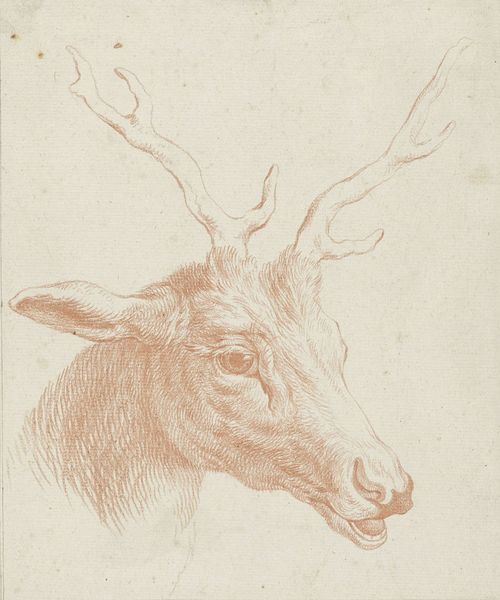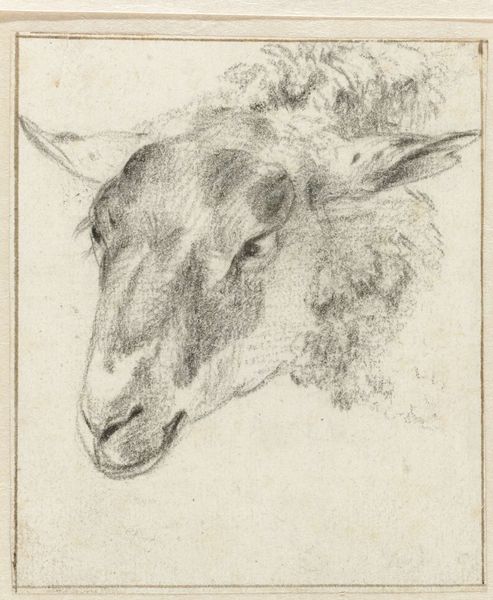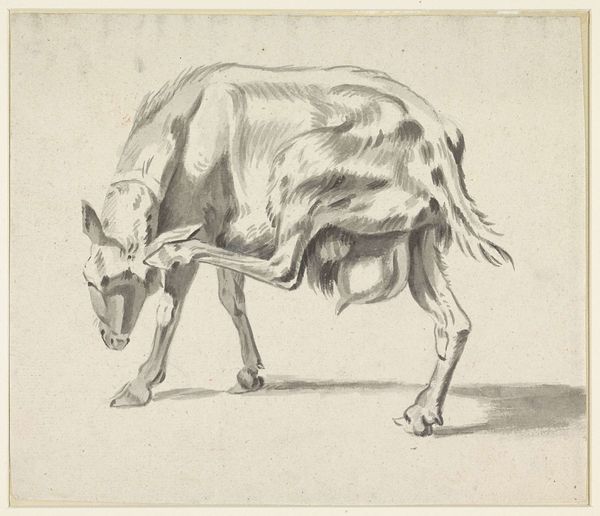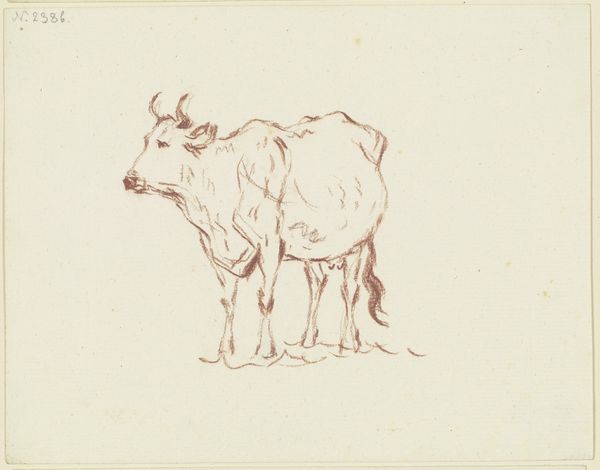
drawing, pencil, charcoal
#
drawing
#
landscape
#
charcoal drawing
#
form
#
pencil drawing
#
pencil
#
charcoal
#
realism
Dimensions: height 279 mm, width 362 mm
Copyright: Rijks Museum: Open Domain
Editor: Here we have Johannes Tavenraat's "Head of a Deer, Facing Left," a pencil and charcoal drawing dating from somewhere between 1819 and 1881. It’s remarkably lifelike; you can almost feel the texture of its fur. What stands out to you? Curator: What I find compelling is how Tavenraat’s process reveals a shift in our relationship with the natural world. During the 19th century, burgeoning industrialization demanded new modes of representing nature – no longer just as sublime scenery but as a resource, a raw material. This drawing, with its precise rendering, almost feels like a study, a dissection. Editor: A dissection? It feels more reverent than that, somehow. Curator: Perhaps. But consider the choice of materials. Pencil and charcoal were becoming increasingly available and affordable, byproducts of industrial processes themselves. This accessibility allowed for a democratization of art, a move away from exclusive, high-art practices to more accessible forms of representation. What was this drawing intended for? Was it a preliminary sketch? Or a final product meant for wide distribution? Editor: I hadn’t thought about the materials that way. So the value isn’t necessarily in the artistic skill alone, but also in how readily available art supplies became. Curator: Exactly! The means of production are as important as the image itself. How did access to these new materials affect the artist’s practice? What new markets did it open up? By understanding these aspects, we gain a richer understanding of the work's context and implications. Editor: It definitely reframes the way I look at the drawing. Thanks for pointing that out! Curator: My pleasure. Thinking about the materiality forces us to rethink art history.
Comments
No comments
Be the first to comment and join the conversation on the ultimate creative platform.

